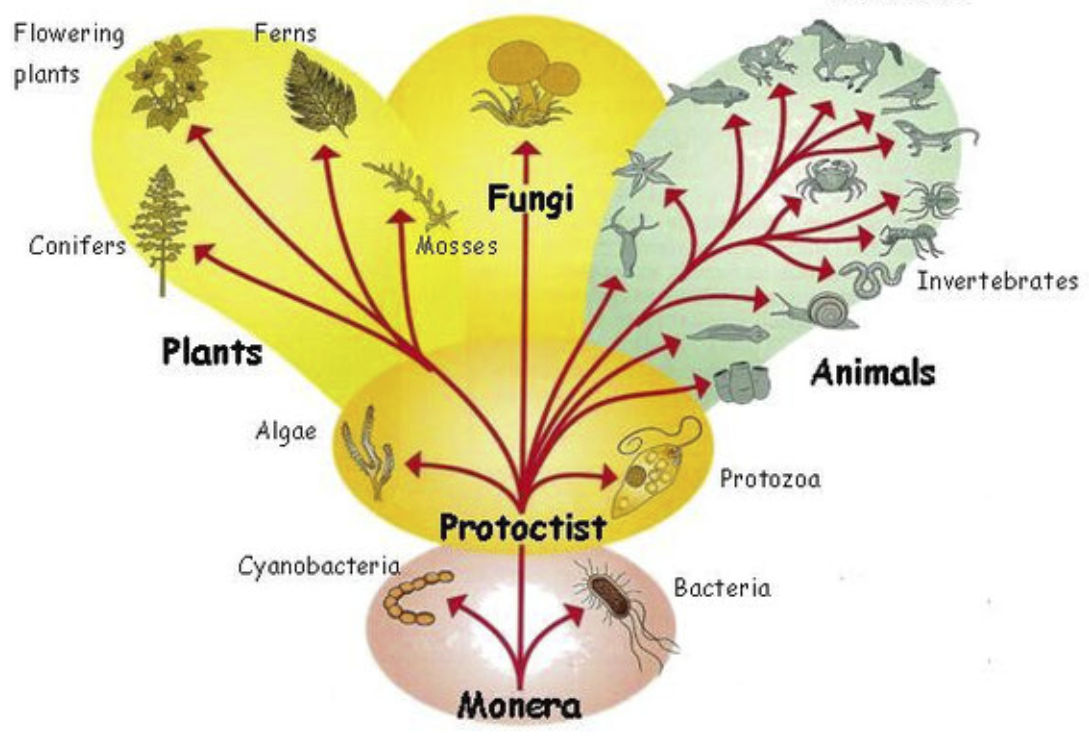6.5. CLASSIFICATION OF LIVING THINGS
There are two principal systems of classification:
- Artificial system: based on physical characteristics (shape, size and color) and habitat.
- Natural system (scientific classification): based on natural relationships (internal and external characteristics and evolutionary (genetic) relationships).
Taxonomy is the science of classifying living things. There are different taxonomic categories and species is one of these categories. Every living thing belongs to one species.
Controversy exists in the definition of species, but one accepted definition is: “A species is a group of living things that are physically similar and can produce fertile descendants”.
How are species named? The scientific system that is used to name living things is called binomial nomenclature. This system uses two Latin words (an example of each kingdom is in the table below).
| 5 KINGDOMS | CELL TYPE | ORGANIZATION | NUTRITION | TISSUES |
|---|---|---|---|---|
| ANIMALS (e.g. Homo sapiens) |
Eukaryotic | Multicellular | Heterotrophs | Yes |
| PLANTS (e.g. Chamaerops humilis) |
Eukaryotic | Multicellular | Autotrophs | Yes |
| FUNGI (e.g. Saccharomyces cerevisiae) |
Eukaryotic | Unicellular Multicellular |
Heterotrophs | Yes |
| PROTOCTISTS (e.g. Plasmodium falciparum) |
Eukaryotic | Unicellular Multicellular |
Autotrophs | Yes |
| MONERA (e.g. Escherichia coli) |
Eukaryotic | Unicellular | Heterotrophs | Yes |
 YouTube: WillDiv “5 bacterias sensacionales”
YouTube: WillDiv “5 bacterias sensacionales”

 PRÁCTICA DE LABORATORIO Nº 7:
Cultivo de microorganismos.
PRÁCTICA DE LABORATORIO Nº 7:
Cultivo de microorganismos.
 PRÁCTICA DE LABORATORIO Nº 8:
Microscopio óptico y observación de protozoos.
PRÁCTICA DE LABORATORIO Nº 8:
Microscopio óptico y observación de protozoos.
 PRÁCTICA DE LABORATORIO Nº 9:
Lupa binocular y observación de moho.
PRÁCTICA DE LABORATORIO Nº 9:
Lupa binocular y observación de moho.
